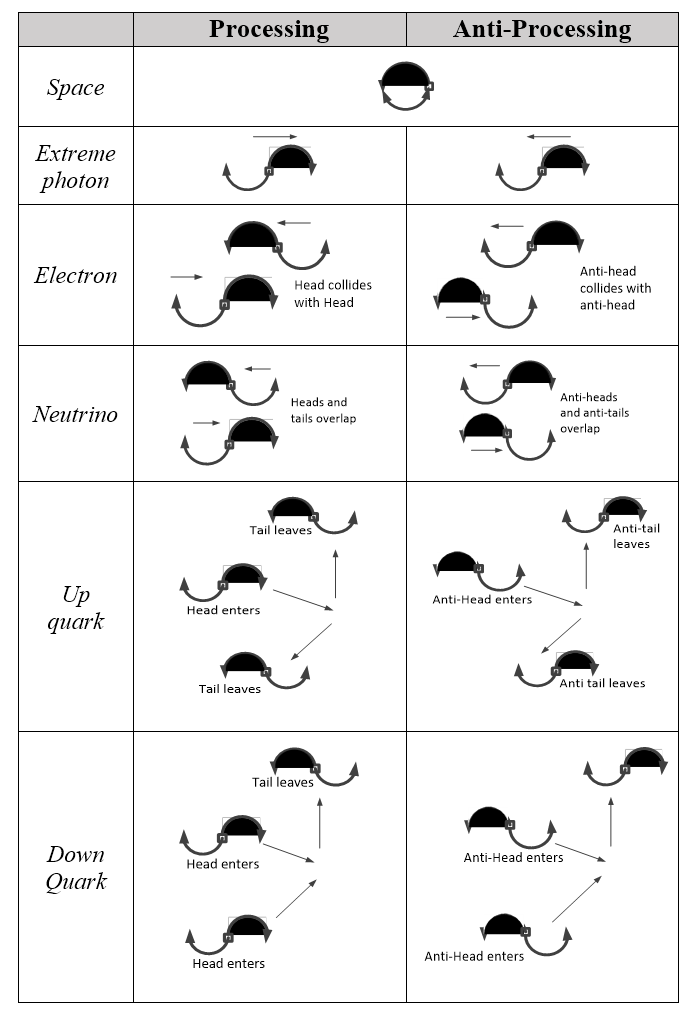In the standard model, mass, charge, and energy are independent properties that exist because they do, but here they all derive from quantum processing. Matter is a standing wave of light, where its mass is the net processing that repeats, its charge is the net processing that doesn’t run, and its energy is the rate of processing transfer on the network. Figure 4.16 summarizes the processing behind the basic entities of physics, including space, as follows:
1. Space. A point of empty space is a null process on a network. The net process result is zero so it has no mass, the process remainder is zero so it has no charge, and when no processing is transferred, it has no energy.
2. Photon. An extreme photon is the null process of space divided over two points. There is a net result at each point so it has a relativistic mass, the remainder is zero so it has no charge, but processing is transferred so it has energy.
3. Electron. An electron is a standing wave of extreme photons colliding head-to-head on an axis. The net result gives it mass, the remainder is negative so it has a negative charge, and its movement transfers processing to give it energy.
4. Neutrino. A neutrino is a standing wave of extreme photons colliding head-to-tail on an axis. There is a tiny result by asymmetry so it has a tiny mass, the remainders cancel to give no charge, and its movement transfers some processing so it has some energy.
5. Quark. A quark is a standing wave of three extreme photons in a plane, where an up quark is a head-tail-tail collision, and a down quark is a head-head-tail collision. The net result in both cases gives mass, the remainders give one-third charges, and its movement transfers processing to give energy.
6. Anti-matter. Anti-matter versions of electrons, neutrinos, and quarks arise by reversing their processing, to give the same mass but an opposite charge remainder.
Instead of mass, charge, and energy being unrelated properties of a matter substance, this model relates them to processing on a network that also creates empty space. All the basic properties of physics then arise from processing.
